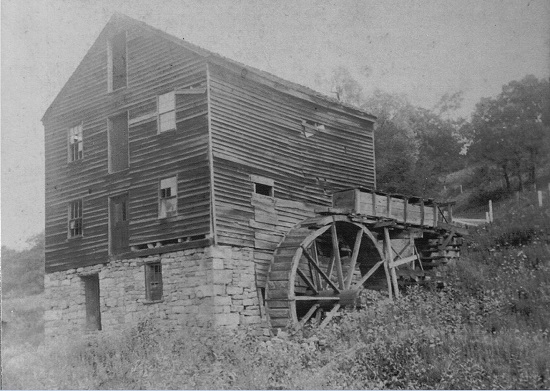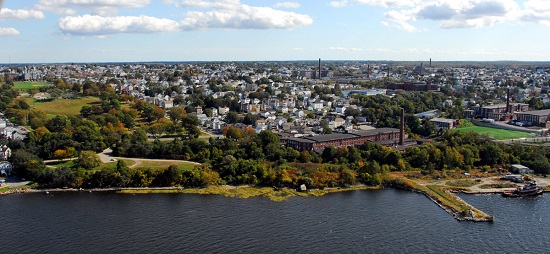Rebuilding mills as communities
Fall River, "The Spindle City. In the foreground is the Algonquin Mill, for which there are big plans and high hopes.
Photo by TOM PATERSON
The Mills Alliance, which wants to protect and reuse Massachusetts's old mills -- many built in the 19th Century -- for economic, environmental, sociological and, of course, aesthetic reasons is a terrific resource for developers, owners, public officials and local residents in general who see the big long-term advantages of saving these old stone and brick structures, which could last for many hundreds of years more if they are taken care of. Major centers for this beautiful and utilitarian architecture include Lowell, Fall River, New Bedford, Brockton (the former shoe-making center) and Taunton.
While the alliance is now focusing on Southeastern New England, members see it eventually expanding its activities to include mills in all of southern New England and perhaps beyond in the Northeast. (Upstate New York and parts of Pennsylvania have some beauties.)
Many of them are highly adaptable for residential space and commercial activities, including assembly. Yes, some can be turned into real factories again! These buildings are so large that people can work on one floor, live on another and shop in stores on a third (presumably usually the ground floor). These are some of the ways in which saving them reduces sprawl.
The roofs of some of these mills are big enough to support commercially viable vegetable farms. (See the Brooklyn Grange as an example.)
And now Mills Alliance people are making a push to teach people that the carbon footprint of tearing them down is heavy.
The alliance says: "We believe that in an era of increasing population, decreasing economic stability, increased competition for natural resources, generally rising prices and abundant pressures on all of us to live smartly, economically and in harmony with our environment, mills offer great hope and possibility by their central locations and adaptive reuse.''
It goes on:
"Pull our mills into the 21st Century by the embrace of new technology, the promotion of tax incentives for recapitalization, and encouragement of mixed-use, live/work communities that will provide housing and employment and an agreeable, sustainable quality of life in our beleaguered industrial centers.''
Quite right.
Extending the run of the mills
 Mill, with waterwheel, in Kennells Mills, Pa.
Mill, with waterwheel, in Kennells Mills, Pa.
Check out the Mills Alliance, which is trying to make more use of old textile and other mills as part of the sustainability movement.

